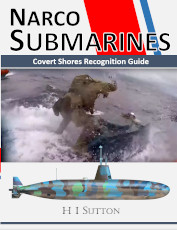
![]()

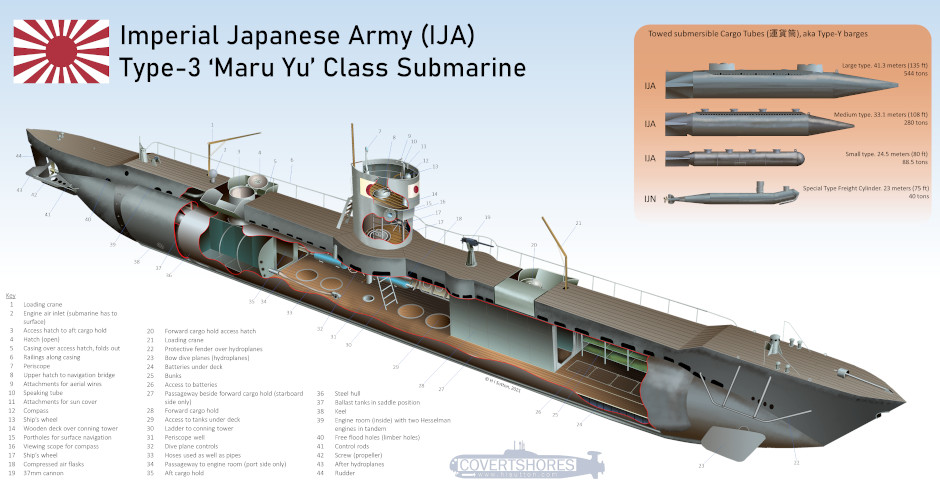
CLICK to enlarge. Original artwork.
The Imperial Japanese Army's Sneaky Troop Transport Submarine
 The vulnerability of landing craft is a hot topic for amphibious forces around the world. The proliferation of heavyweight anti-tank missiles and weaponized drones, even among non-state actors, makes them increasingly at risk. And against a near-peer adversary they are particularly vulnerable. This means that expeditionary forces are more likely to face casualties as they land, and also as resupplies are brought in.
The vulnerability of landing craft is a hot topic for amphibious forces around the world. The proliferation of heavyweight anti-tank missiles and weaponized drones, even among non-state actors, makes them increasingly at risk. And against a near-peer adversary they are particularly vulnerable. This means that expeditionary forces are more likely to face casualties as they land, and also as resupplies are brought in.
So Navies and Marines are looking to ways to make their landing craft more survivable. Using submarines is not a daft idea. Faced with a similar problem in World war Two, the Japanese Army (not navy) built dedicated transport submarines.
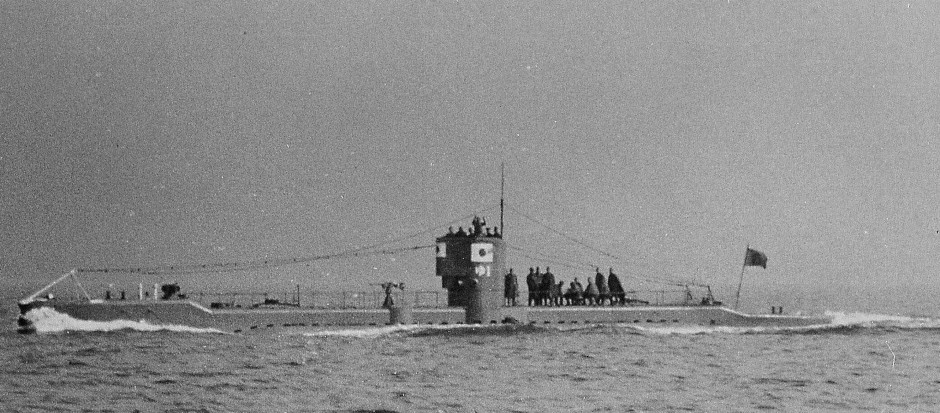
IJN photo
These submarines are particularly interesting in their own right. But more so in the context of the challenges facing amphibious forces today. And in the context of narco submarines as well.
Maru Yu submarine
Early in World War Two the Imperial Japanese forces were leaders in amphibious warfare. They had a range of forward-thinking designs which, in many respects were ahead of the Allied capabilities. Their ability to land infantry and tanks on beaches contributed to their rapid gains early on. Yet as the war in the Pacific shifted, American submarines and aircraft became increasingly effective. The supply lines created by created by Japan's initial successes came a weak point. U.S. Navy submarines alone accounted for 55% of Japan's merchant marine losses. And Imperial Japanese Navy ships, and Army troop ships, proved similarly vulnerable.

One solution was to use submarines to resupply the far-flung garrisons. Regular Navy submarines were diverted to this vital task, but dedicated troop transport submarines were also built. This was unique to the Japanese Navy although other navies have thought about it since.
The Type-3, better known as the Maru Yu (マルゆ) was designed from the outset as a mass-produced transport submarine. It was in many respects simpler than other submarines of the time. It had a single pressure hull which extended almost the entire length of the boat. This had no internal bulkheads to create separate watertight compartments in the event of an emergency. The crew and passengers lived in the forward end, roughly where you would expect the torpedo room on a regular submarine. Amidships was basically open, with the hydroplane and ballast controls along the walls. A ladder led up to a small conning tower with the ship’s wheel. This formed the base of a small sail. Two Hesselman engines, mounted in tandem, drove the single screw while the submarine was on the surface. A small battery compartment was under the deck in the forward part of the hull.
The cargo holds could be loaded and unloaded by hatches on the deck. Small cranes were provided.
THE book on Special Forces subs Covert Shores 2nd Edition. A world history of naval Special Forces, their missions and their specialist vehicles. SEALs, SBS, COMSUBIN, Sh-13, Spetsnaz, Kampfschwimmers, Commando Hubert, 4RR and many more.
Check it out on Amazon
Maru Yu specifications
Displacement: 274 tons surfaced, 346 tons submerged
Length: 41.40 m (135 ft 10 in)
Beam: 3.90 m (12 ft 10 in)
Range: 1,500 nm @ 8 knots surfaced + 32 nm @ 4 knots submerged
Speed: 10 knots surfaced, 4 knots submerged
Depth: 100 m (330 ft), crush
Cargo: 23 tons of freight
Passengers: 40
Crew: 23
Armament: 1 x Type-4 37mm gun, supplemented by Type-99 machine guns or Type-92 13mm anti-aircraft guns.
The U.S. Navy observed that the construction standards were poor, this is not unexpected. The submarines were built at for engineering works, none of which had prior experience of submarine building. And they were not intended to be top rate products, they were simple and functional.
Despite their obvious usefulness, in the end they were too few to make a material impact. Only 38 were built out of around 400 planned.
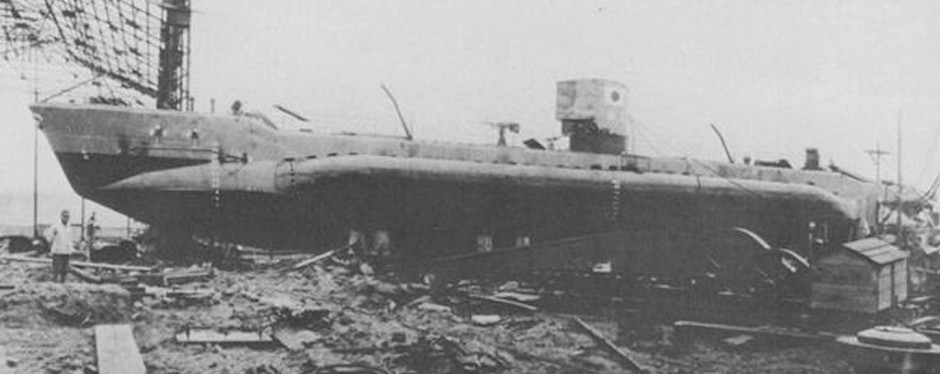
US Navy photo
Low Profile Vessels
Japanese forces, both the Army and Navy, had a range of purpose-built transports. These included dedicated landing boats like the Daihatsu Class (大発動艇). These had a bow-ramp like we would expect of a generic landing craft. These were actually designed in 1924(!), contemporary with the Royal Navy’s ‘Motor landing craft’ which is generally seen as the first bow-ramp landing craft.
The World's ONLY Guide to
Narco Submarines
10 years of research, analyzing over 160 incidents, condensed into a handy guide. This unique book systematically breaks down the types and families. With detailed taxonomy, recognition 3-views, profiles and photos. Available on Amazon
But the landing craft, and larger tankers and freighters, were particularly vulnerable to American submarines and aircraft. Without air and underwater superiority the extended Japanese supply lines were hit hard. The Maru Yu couldn’t be the solution to every transport need and other, equally ingenious, solutions were quickly developed.
One solution that the Japanese Army came up with to increase the survivability of the vital supplies going to their island garrisons was Low Profile vessels (LPVs). These resembled some of the towed “narco torpedoes” of today but were much, much, larger.
The main type was known simply as a cargo tube (運貨筒), or as a Type-Y barge to US Naval Intelligence. They could carry either fuel or freight and were semi-submersible. When they were loaded only the two raised cargo hatches were visible above the surface. This made them hard to see and difficult to target.
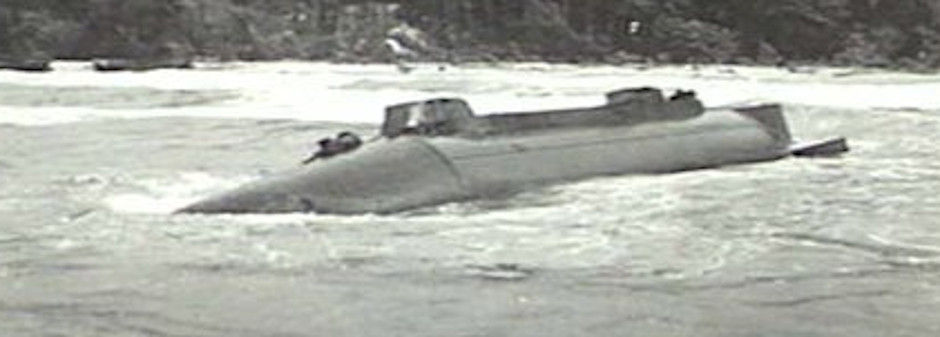
Type-Y barge washed up on a beach. Australian War Memorial
These were towed behind ships or cruiser submarines. The Maru Yu could also tow a cargo tube to increase its payload. I am not certain exactly which variants of the cargo container were used with the Maru Yu but the largest available was the same size as the submarine itself. So it is likely that smaller ones were used.
There was also an even larger towed fuel barge called the Type-X by US Naval Intelligence. It does not seem likely that the Maru Yu could tow this. It was about 60 meters (199 ft) long and 7.6 meters (25 ft) across. It was also a low-profile vessel (LPV) with only a pilot house in a raised stern (actually contemporary US Naval Intelligence sources said bow, but this appears incorrect, at least in the below example). The flat deck was almost awash.
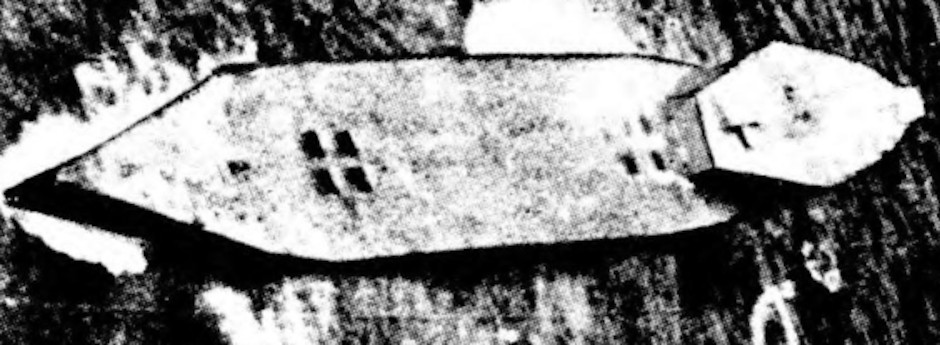
Type-X barge. Based on this photo, the cockpit was at the stern, not the bow as reported at the time. US Navy photo.
Get The essential guide to World Submarines
This Covert Shores Recognition Guide Covers over 80 classes of submarines including all types currently in service with World Navies.Check it out on Amazon
The Navy (IJN) also developed a Special Type Freight Cylinder (特型運貨筒). Unlike the army version this was self-propelled and had a single crew member. The motor and screws were from an old torpedo with the motor switched to pure O2.
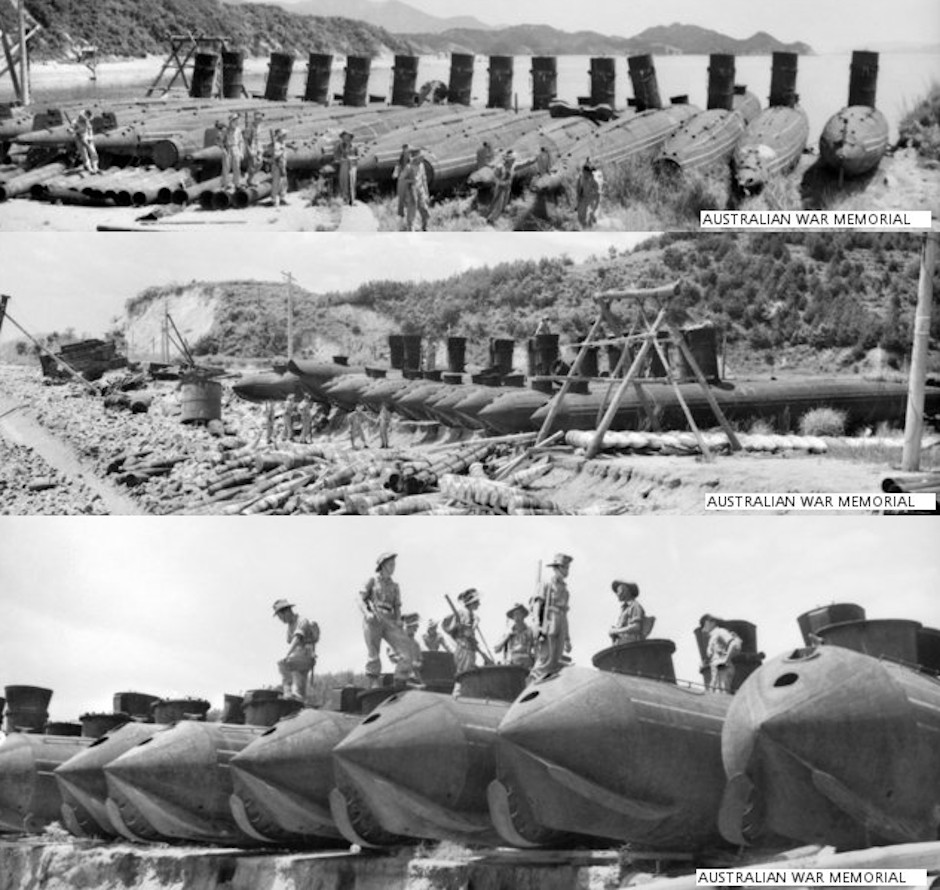
Special Type Freight Cylinders. If you look carefully there are two different bow arrangements. Australian War Memorial
The 40 ton craft was 23 meters (75 ft) long and 1.85 meters (6 ft) across. A semi-submersible, it had rudders but no hydroplanes fpr diving. The single crewman stood in a barrel like conning tower on top of the submerged fuselage. Some versions had pointed bows while others have raised bows. They could manage 6.5 knots and had a self-propelled range of around 2.6 nautical miles.
The most extreme type of submersible barge was the 'cannonball' (運砲筒). This catamaran design able to carry 3 x 15 cm howitzers and ammunition on its flat deck. Two old torpedoes provided the propulsion, allowing a cruising range of 3.131749 nautical miles at 5.5 knots or 4.3 nautical miles at 3.4 knots.
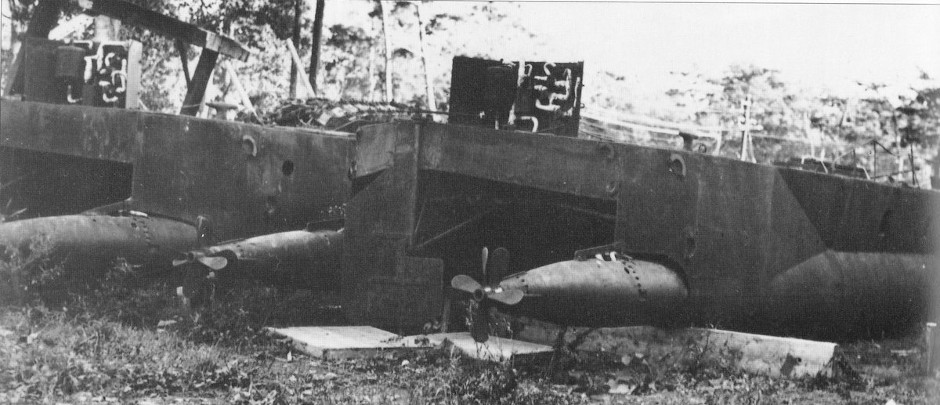
The submersible would be carried on the deck of a larger submarine until close to the beach, where it would detach and swim ashore under its own power. A single crewman operated the craft.
Related articles (Full index of popular Covert Shores articles)

 Japanese Ha201 Sen-Taka-Sho fast attack submarine of WW2
Japanese Ha201 Sen-Taka-Sho fast attack submarine of WW2

 Japanese Ko-Hyoteki midget submarine of WW2 - Pearl Harbor attack
Japanese Ko-Hyoteki midget submarine of WW2 - Pearl Harbor attack

 Japanese Kairyu midget submarine of WW2 w/Cutaway
Japanese Kairyu midget submarine of WW2 w/Cutaway

 Surcouf Cruiser Submarine w/Cutaway
Surcouf Cruiser Submarine w/Cutaway

 World war One Type UC-1 U-boat w/Cutaway
World war One Type UC-1 U-boat w/Cutaway
 Narco Subs 101. w/Cutaway
Narco Subs 101. w/Cutaway



